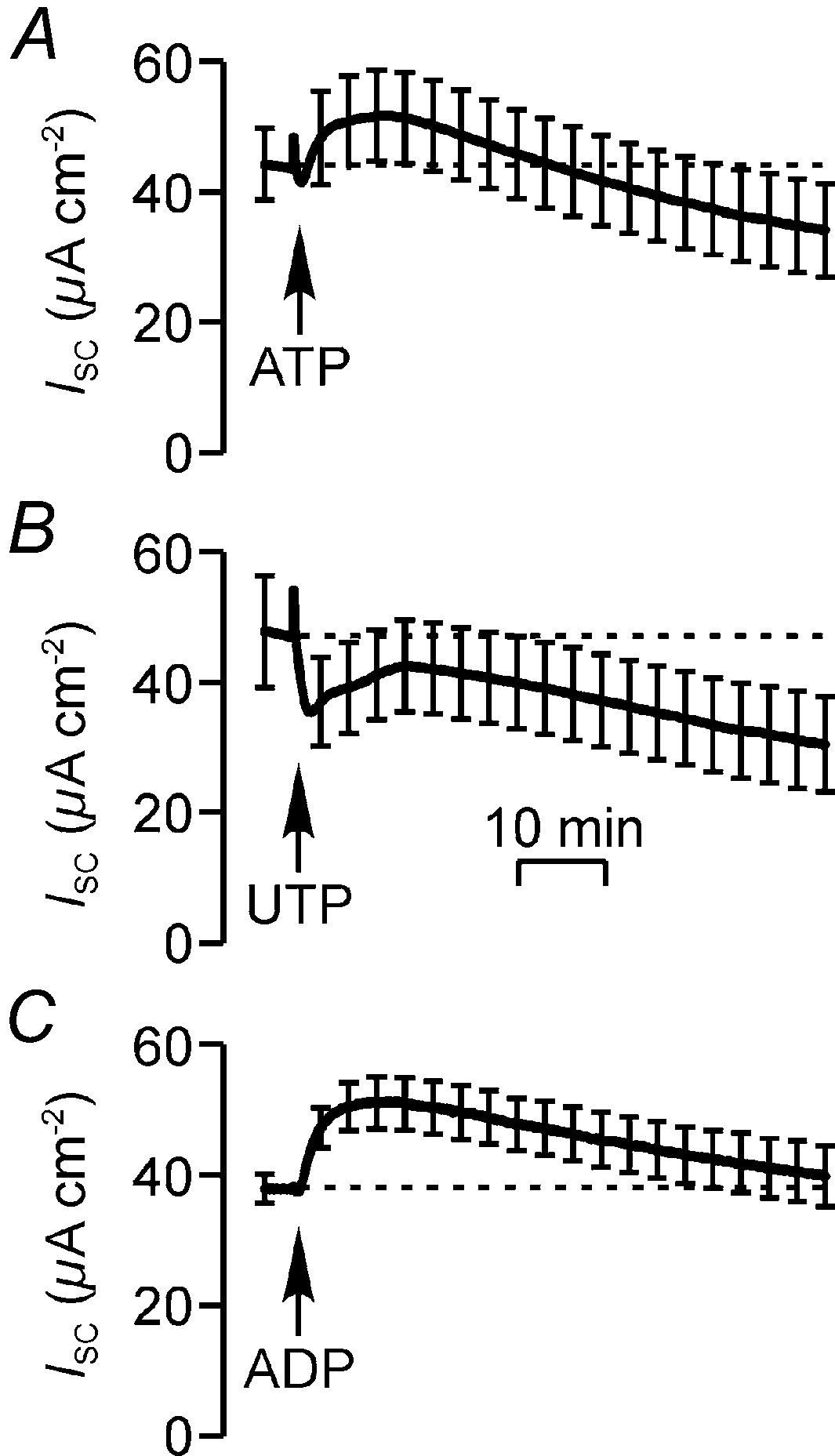Apical nucleotides inhibit Na+ transport in many absorptive epithelia and these responses are often attributed to apical receptors belonging to the P2Y2 subclass, which characteristically display equally sensitive to ATP and UTP (see e.g. Ramminger et al. 1999). In the present study we have explored the effects of apical nucleotides upon Na+ transport in dexamethasone-treated (0.2 µM) H441 human bronchial epithelial cells as this cell line has recently been shown to generate amiloride-sensitive ISC after treatment with this synthetic glucocorticoid (Sayegh et al. 1999). Our data show that ATP elicited a complex response (Fig. 1A) which initially consisted of an increase in ISC. However, this was succeeded by a slowly developing fall in ISC until, after ~30 min exposure to this nucleotide, ISC had fallen below its initial control value (P < 0.05, Student’s paired t test). The response to UTP (Fig. 1B), in contrast, consisted of an initial brief transient followed by a rapid and persistent fall (P < 0.002) in ISC. These two nucleotides thus have markedly different effects, a finding which is inconsistent with the view that these nucleotides act via a common receptor population. ADP, a nucleotide that does not activate P2Y2 receptors but which is an agonist at certain other P2Y receptor subtypes, including P2Y1 receptors, evoked a monophasic increase in ISC (Fig. 1C). H441 cells thus express a complex population of apical P2Y receptors which allow both stimulatory and inhibitory control over amiloride-sensitive ISC. The differential effects of ATP and UTP is similar to the situation in the isolated porcine trachea, where UTP, but not ATP, can exert inhibitory control over Na+ absorption (Inglis et al. 2000).
This work was supported by the Wellcome Trust and Tenovus (Scotland).
Epithelia/Membrane TransportEpithelia/Membrane TransportEpithelia/Membrane TransportEpithelia/Membrane TransportEpithelia/Membrane TransportEpithelia/Membrane TransportEpithelia/Membrane TransportEpithelia/Membrane TransportEpithelia/Membrane TransportEpithelia/Membrane TransportEpithelia/Membrane TransportEpithelia/Membrane TransportEpithelia/Membrane TransportEpithelia/Membrane Transportovus (Scotland).

